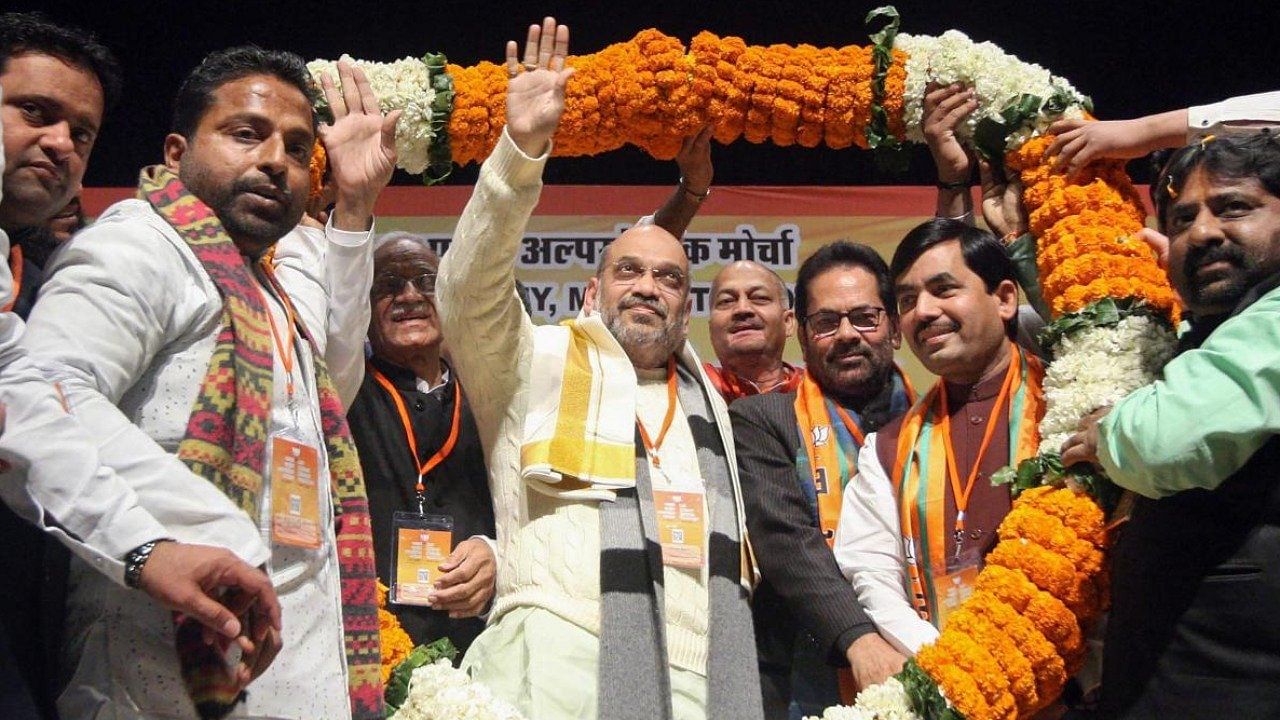
When the anti-NRC and CAA protests erupted in the Aligarh Muslim University (AMU) in 2019, Dr Tariq Mansoor, the then vice-chancellor, was widely pilloried for allowing police to enter the campus.
The student’s union and staff ‘expelled’ him for the controversial decision. While he collected his share of detractors, the VC, crucially, won a few admirers in the BJP for his handling of the situation. And it showed this year.
In April, just ahead of his superannuation, Mansoor was nominated to the legislative council by the saffron party. And last month came the big one: the suave surgeon became the national vice president when BJP president J P Nadda reshuffled his team.
Like former President A P J Abdul Kalam — who fits the BJP-RSS's idea of what an ideal Muslim should be — Mansoor personifies the assimilation of Muslim minorities as per the Sangh’s concept of cultural integration in post-Independence India.
In AMU, Mansoor promoted activities at the university's Dara Shikoh Centre for Inter-Faith Understanding and Dialogue, one of the pet projects of RSS’ joint general secretary Krishna Gopal, who hails from Mathura in western Uttar Pradesh.
At a political level, Mansoor’s ascension is the latest of the party's carefully calibrated efforts to reach out to Pasmanda Muslims ahead of the 2024 polls, while offering a peek into the BJP's evolving relations with the community over the past 75 years.
In its earlier avatar as Jana Sangh, the priority for the Hindu right wing was to create a core socio-political base for itself. The wounds of the partition were fresh and the Congress was the dominant political force, underscoring its idea of secular India vs Muslim Pakistan.
Compulsions of power politics and its interactions with non-Congress socialists engendered a mutation in the Jana Sangh over the next three decades, which eventually led to the rise of leaders like Sikandar Bakht in the BJP after 1980.
In the 1990s, with Vajpayee at the helm, though cultural nationalism remained at the core of BJP’s political agenda, the party had to diversify. This opened the doors for Mukhtar Abbas Naqvi and Shahnawaz Hussain to emerge as the BJP’s minority faces.
This was also the time when regional parties in the heartland states got into fierce competitive politics with the Congress for Muslim votes after the demolition of the Babri Masjid.
Mulayam Singh Yadav’s Samajwadi Party created a parallel Muslim leader in Azam Khan while Mayawati had Naseemuddin Siddiqui. Amid these aggressive moves, the Congress wooed Muslims through the Sachar Committee report by announcing scores of minority welfare schemes. Former Prime Minister Manmohan Singh said Muslim minorities should have the “first right to the resources of the country”.
The crescendo hit a peak in 2012 when Muslim representation in the 403-member UP Assembly peaked at 69 MLAs — the highest number recorded since Independence.
Two years later, the BJP under Modi engineered a counter-polarisation of the majority to register victory in 71 parliamentary constituencies out of the 80 up for grabs in UP.
The BJP’s outlook towards minorities for electoral purposes under the current dispensation is qualitatively different from that of Congress’ Nehruvian approach, which the former often dubbed as ‘appeasement politics'.
As the dominant force in the Indian polity, the BJP has to engage with the Muslims who constitute 14% of the population. But in devising the rules of engagement, the party has delved into the fine print of the Sachar Committee report, and its assessment of the state of Indian Muslims.
Unlike others, the BJP does not perceive the Muslim community as a monolith, but as an amalgamation of disparate social groups like the Hindus.
The Sachar report stratifies the Muslims in India into three categories: the Ashrafs or ‘the nobles’, the Ajlafs similar to OBCs among Hindus and the Arzals — the “lowest castes” and the equivalent of SCs.
Also Read | UP, Muslims in focus in BJP's new national team
Till now, the Muslim political narrative in India has been influenced by the nobility or the Ashrafs — those who claim ancestry from Syeds, Mughals, Sheikhs, and Pathans. But numerically, the Ajlafs and Arzals — together called the Pasmanda or those left behind — outnumber the Ashrafs by 4:1.
The nomination of Mansoor, a Pasmanda Muslim, is part of BJPs messaging to the community. (The UP legislative council has a strength of 100, of which six members are Muslims. Interestingly, four out of these legislators were elected on a BJP ticket compared to two from Samajwadi Party).
Danish Azad Ansari — the lone Muslim minister in Yogi Adityanath’s government — is also a Pasmanda Muslim.
This outreach complements the Modi government’s targeted beneficiary schemes for the poor and legislative interventions like the abolition of triple talaq and the proposed Uniform Civil Code.
“The idea is also to militate against an aggressive Muslim polarisation. And this may come in handy in seats which we lost by a narrow margin in 2019,” said a UP BJP leader who did not want to be identified.
The current outreach notwithstanding, the BJP has been cautious so as not to dilute its core political agenda, which has so far paid rich electoral dividends.